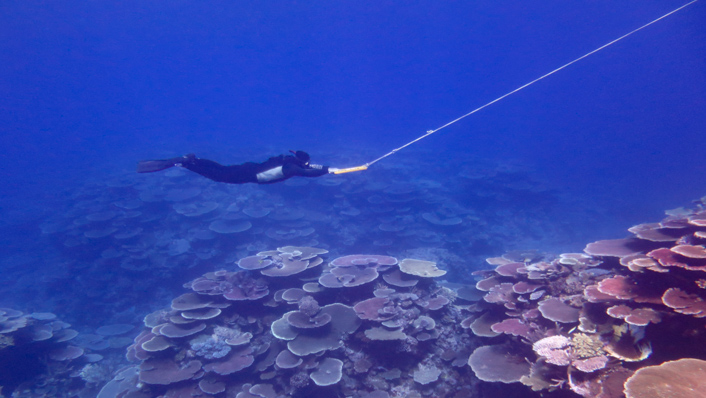“… continued acute and severe disturbances are occurring more often, and are longer-lasting.”
Or, how to frame the climate change debate.
.
The Specator gives us the latest on the Great Barrier Reef:
We are, of course, in the midst of a ‘climate emergency’ and the ‘sixth mass extinction’ of life on Earth. It is just that one of the iconic victims doesn’t seem to be playing ball just at the moment. As recently as May, environmentalists were warning that the Great Barrier Reef, the 1,500-mile coral structure off the coast of Queensland, was being doomed by warming seas. It was reported to be suffering a ‘mass bleaching’ – where the plants which live on the reef and provide food for it die off. The blame was put on warmer seas. Worse, this was the first mass bleaching event to occur in a ‘La Niña’ year, when the seas off Australia are supposed to be going through a cyclical cooling phase. A gloomy David Wachenfeld, chief scientist of the Great Barrier Reef Authority, told the Guardian at the time that ‘unexpected events are now to be expected. Nothing surprises me more’.
How did climate doomsters get the Great Barrier Reef so wrong? | The Spectator
Except, this hasn’t happened, as reported by the sceptic Herald Sun from Australia:
This Great Barrier Reef discovery has taught a vital lesson to trust nothing the global warming industry says about the “climate crisis”.
Reef scare proves warmist ‘experts’ can’t be trusted (paywall)
It does depend very much about what you want to hear:
Rejoice! Two-thirds of Australia’s Great Barrier Reef recorded the greatest amount of coral cover in almost 40 years, according to a new report by the Australian Institute of Marine Science (AIMS).
Climate change has absolutely gutted the reef. Warming seas increased both the frequency and intensity of underwater heatwaves — the leading cause of devastating coral bleaching — draining the vibrant (and vital) underwater ecosystem of its life and color.
And yet: Per the AIMS report, the northern and central areas of the vital undersea habitat are showing encouraging signs of recovery. It’s a heartening sign that the reef, if properly protected, might yet one day make a full recovery.
Amazing News! The Great Barrier Reef Just Made a Massive Comeback
Explained | The Great Barrier Reef’s recovery and vulnerability to climate threats – The Hindu
Ultimately, it’s about how you chose to see what’s happening – and we call that ‘framing’:
Framespotting | A Book by Laurence and Alison Matthews
Five ways that people frame climate change debates | Guardian sustainable business | The Guardian
But perhaps we should just listen to the scientists:

AIMS CEO Dr Paul Hardisty said the results in the north and central regions were a sign the Reef could still recover, but the loss of coral cover in the southern region showed how dynamic the Reef was. “A third of the gain in coral cover we recorded in the south in 2020/21 was lost last year due to ongoing crown-of-thorns starfish outbreaks,” he said. “This shows how vulnerable the Reef is to the continued acute and severe disturbances that are occurring more often, and are longer-lasting.” Dr Hardisty said the increased frequency of mass coral bleaching events was “uncharted territory” for the Reef, with this year’s bleaching event the fourth in seven years and the first to occur during a La Niña.
Highest coral cover in central, northern Reef in 36 years | AIMS